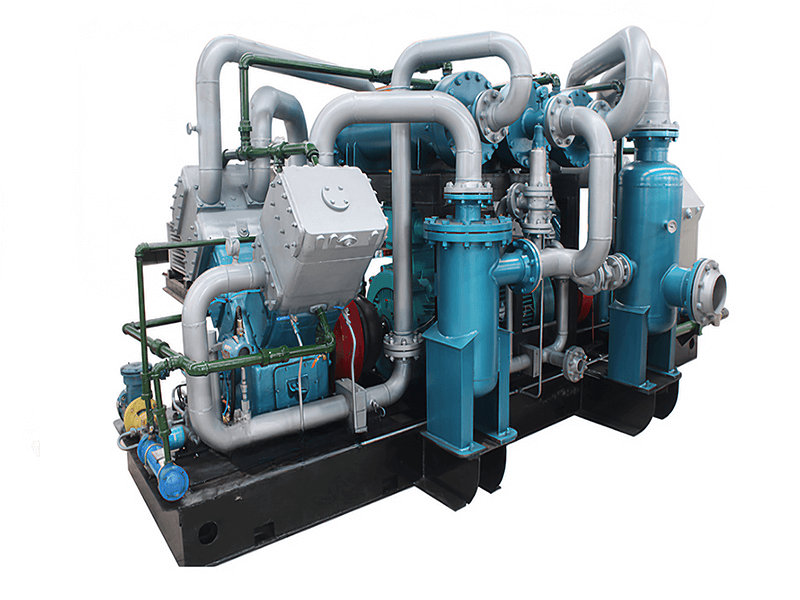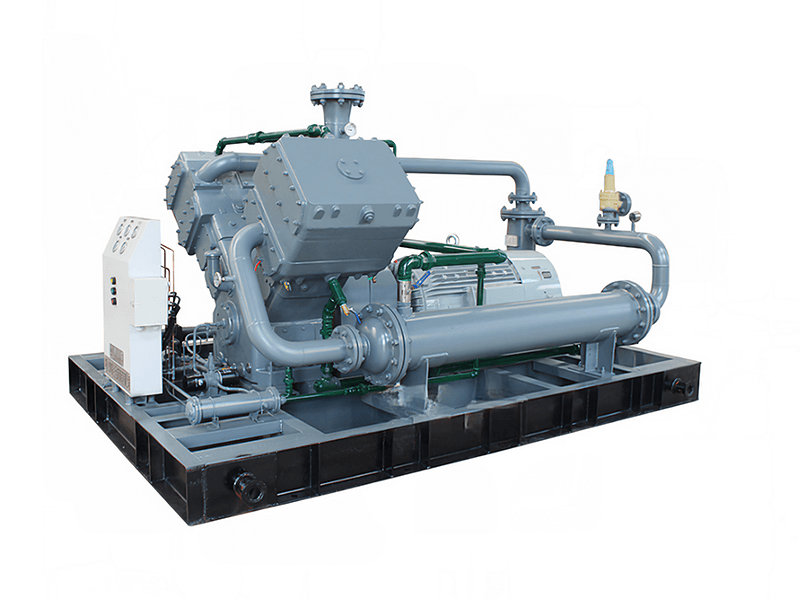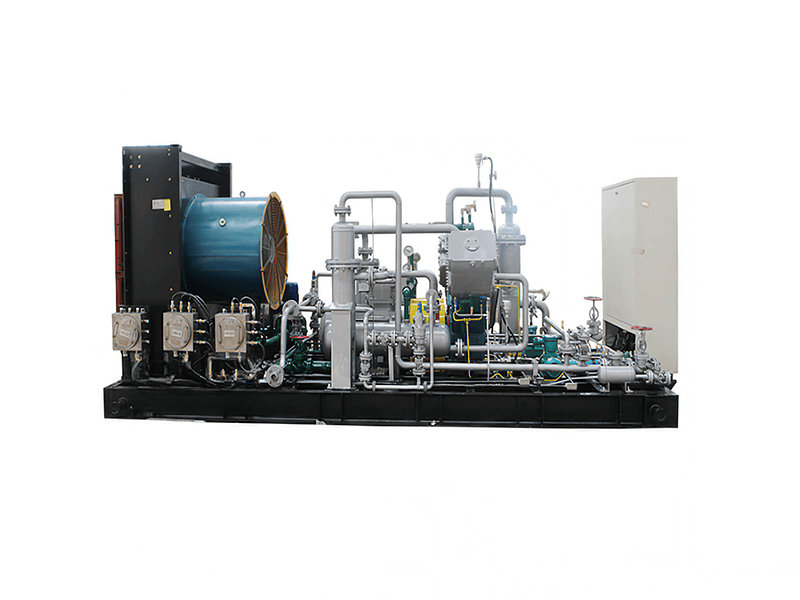In industrial production processes, the energy consumption of compressed air systems typically accounts for 20%-40% of a company's total electricity usage, and the air demand in most factories exhibits significant fluctuations. Traditional fixed-speed air compressors operate using a loading-unloading cycle, which generates substantial energy waste under partial load conditions. According to statistics from the International Energy Agency (IEA), over 60% of air compressor systems suffer from the phenomenon of "oversized horsepower for a small load," with an average operating efficiency of less than 50%. The emergence of variable frequency compressors provides an effective technical solution to this industry challenge.
Working Principle and Energy Efficiency Advantages of Variable Frequency Technology
Variable frequency compressors utilize Variable Frequency Drive (VFD) technology, adjusting motor speed by changing the power supply frequency, thereby achieving continuous regulation of discharge volume. Their core control principle is based on a PID algorithm, which monitors pipeline pressure changes in real-time and automatically adjusts the compressor speed to keep system pressure fluctuations within a range of ±0.01 MPa. Compared to the traditional loading-unloading method, this control method eliminates energy loss during no-load operation.
Energy efficiency advantages are mainly manifested in three aspects: Firstly, it avoids no-load operation energy consumption. The no-load power of traditional air compressors is about 30%-40% of the rated power, while the power of variable frequency compressors can drop to 10%-15% under low load. Secondly, it reduces energy loss during the unloading-loading transition process. Finally, by maintaining a constant outlet pressure, it reduces system backpressure and unnecessary energy consumption. Measured data indicate that the average energy efficiency of variable frequency compressors under varying conditions is 25%-35% higher than that of fixed-speed compressors.

Technical Characteristics and Performance Indicators
Modern variable frequency compressors use Permanent Magnet Synchronous Motors (PMSM) and intelligent control systems to achieve higher efficiency levels. The efficiency of permanent magnet motors can reach IE5 efficiency class, which is 5%-8% higher than that of traditional induction motors. The control system employs a 32-bit microprocessor with a sampling frequency of up to 4 kHz, enabling millisecond-level rapid response. Compressors are typically equipped with efficient cooling systems to maintain suitable operating temperatures even at low speeds.
Key performance indicators include: a frequency variation range typically of 25%-100%, within which high operating efficiency can be maintained; power factor consistently above 0.95, eliminating the need for additional power factor compensation; noise level 3-5 dB(A) lower than comparable fixed-speed models; pressure control accuracy up to ±0.5% FS. Additionally, the equipment is equipped with energy consumption monitoring functions, capable of displaying key efficiency indicators such as specific power and specific energy consumption in real time.
Application Scenarios and System Configuration
Variable frequency compressors are particularly suitable for applications with significant fluctuations in air demand. In the injection molding industry, where air consumption differences between production stages can reach 60%-80%, variable frequency compressors can effectively match the cyclically changing demand. In the textile industry, the air consumption of spinning and weaving machines varies greatly with product changes, and variable frequency technology enables precise air volume regulation. In automotive manufacturing workshops, where air demand fluctuates typically between 40% and 100% due to production line start-stops and process changes, variable frequency compressors can significantly reduce energy consumption.
System configuration requires consideration of several factors: First, accurately assess the characteristics of air usage fluctuations and draw a load profile. Second, determine the appropriate compressor capacity, usually sized at 1.2-1.5 times the average air consumption. It is also necessary to configure an appropriately sized air receiver tank, generally designed for 10%-15% of the compressor's discharge volume. Finally, optimize the pipeline system to reduce pressure loss. For large compressed air systems, a configuration combining variable frequency compressors with fixed-speed compressors is recommended, using a central controller to implement optimal operating strategies.
System Integration and Intelligent Control
Modern variable frequency compressors employ advanced Internet of Things (IoT) technology, enabling remote monitoring and intelligent management. By installing sensors and data acquisition devices, key parameters such as pressure, flow, temperature, and energy consumption are monitored in real-time, with a sampling frequency of up to once per second. Data is uploaded to a cloud platform via industrial Ethernet or wireless transmission, where machine learning algorithms analyze usage patterns and automatically optimize operating strategies. The system can implement group control management of multiple compressors, automatically deciding the number of units to start and their operating combination based on air demand, ensuring the entire system always operates in the most efficient range.
Maintenance Advantages and Reliability Analysis
Variable frequency compressors also offer significant advantages in maintenance. The soft start function reduces electrical and mechanical stress, extending the service life of the motor and drive system. The Mean Time Between Failures (MTBF) can reach over 60,000 hours. An intelligent early warning system monitors the status of key components in real-time, identifying potential faults in advance to avoid unplanned downtime. Maintenance intervals are extended by 30%-50% compared to traditional air compressors, reducing maintenance costs and manual labor intensity.
Return on Investment and Economic Analysis
The investment payback period for variable frequency compressors is typically 1-3 years. Taking a 132 kW air compressor as an example, with an annual operating time of 8,000 hours and an electricity cost of 0.8 RMB/kWh: the annual electricity consumption of a traditional air compressor at 60% load is approximately 500,000 kWh, costing 400,000 RMB; a variable frequency compressor under the same conditions can save 30% on electricity, resulting in annual savings of 120,000 RMB. Considering a price difference of about 150,000 RMB, the investment payback period is approximately 1.25 years.
Beyond direct electricity cost savings, variable frequency compressors can bring additional benefits: stable pressure improves product quality and reduces scrap rates; the soft start characteristic reduces grid impact and lowers electricity demand charges; extended equipment lifespan reduces maintenance costs. According to assessments based on ISO 11011 standards for compressed air systems, potential energy savings of 20%-30% can typically be identified.
A variable frequency compressor is not just a piece of production equipment but an efficient energy-saving investment. We provide professional energy audit services, conducting 7-day continuous monitoring using ultrasonic flow meters and data loggers to accurately assess your energy-saving potential. Use our online energy-saving calculator by entering your operating parameters to obtain a detailed return on investment analysis. Welcome to schedule a free on-site evaluation; our technical engineers will provide you with a customized energy-saving solution.
Note: The data in this article is based on industry averages. Actual energy-saving effects may vary depending on specific operating conditions. Equipment selection is recommended to be consulted with professional technical personnel and refer to national standards such as GB 19153-2019 "Minimum allowable values of energy efficiency and energy efficiency grades for displacement air compressors". The application of variable frequency compressors requires consideration of influencing factors such as power grid quality and environmental conditions.


























